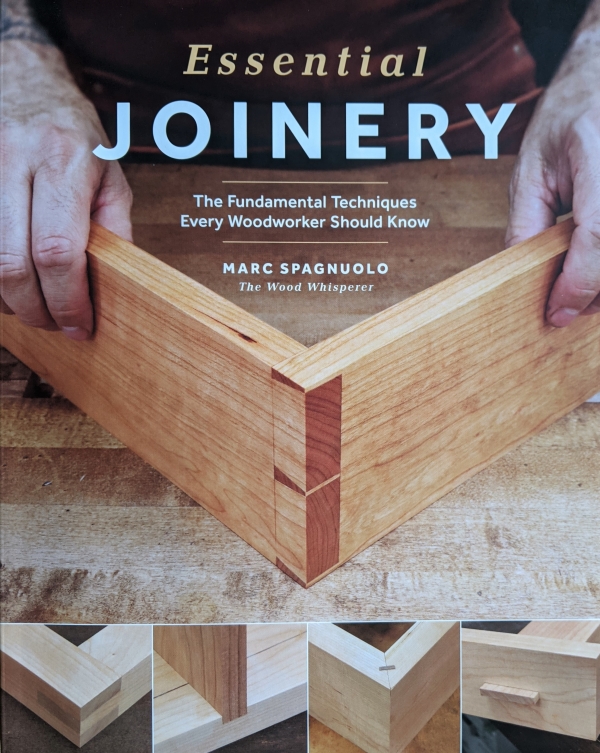
The second woodworking book I chose to read and review in my Woodworking Book of the Month Series is a book written by a contemporary woodworker and YouTuber that I have followed for years. Most of you may know him as The Wood Whisperer. Today I’m reviewing his latest book titled Essential Joinery: The Fundamental Techniques Every Woodworker Should Know by Marc Spagnuolo.
About the Book
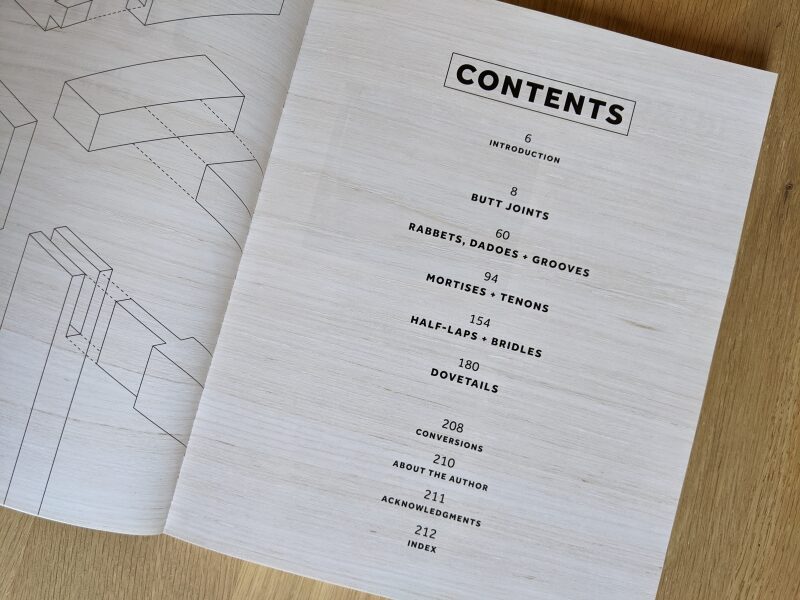
As the title indicates, the book is all about wood joints and the essential joinery methods every woodworker should know. The book is broken down into 5 chapters grouped by type of joint and are arranged in a somewhat escalating level of difficulty, from butt joints, onto rabbets, dadoes & grooves, to mortises & tenons, moving onto half-laps & bridles, and finally dovetails.
Within each chapter, the author describes the steps involved in making each joint, with plenty of pictures. For each given joint, several alternative methods are explained. For example, using dowels, biscuits, pocket screws, or even dominos for a simple butt joint, and how to accomplish these either on a frame, a carcass or even mitered joints.
Essential Joinery Book Review
What I liked About the Book
Perhaps because Marc’s a YouTuber and a great teacher or perhaps because a picture is worth 1,000 words. Whatever the reason, this book is jam-packed with pictures. Each step is visually depicted with high quality pictures that really tell the story. In fact, the pictures do most of the talking, while a very succinct explanation of each step helps fill in the blanks.
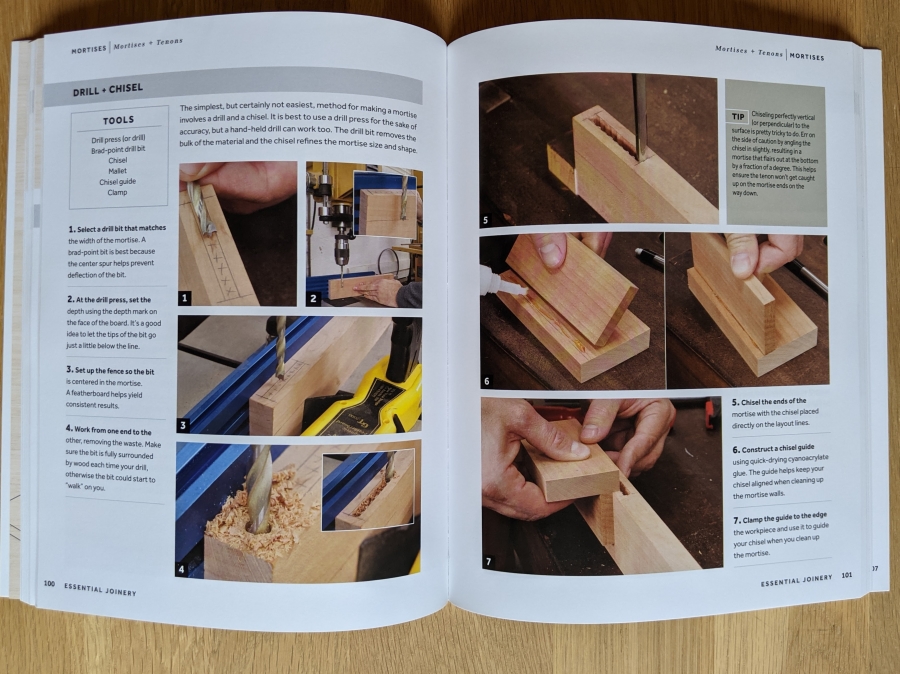
Overall, the information is clear and well laid out. The book’s progression makes sense, from the most simple joints onto techniques a more advanced woodworker might use. The book is also quite comprehensive covering basic joinery from A to Z (at least no gaps that I noticed) and a great reference book to come back to when you’re planning a new project.
What I Didn’t Like About the Book
When I first started reading the book, I was surprised how quickly we just got right into the subject matter. There was barely a 2 page intro! Now don’t get me wrong, this can actually be a good thing. But I guess for once, I actually wanted to read the foreword. Go figure.
While the author presents a great overview and simple summary of how to make each joint, I was often left wanting more and had a lot of unanswered questions. I would read a method involving dowels and ask myself How deep deep should the hole be? What size dowels should I use? How many? But ultimately I realized the point of the book was to provide an overview of all the joinery options available, not to do a deep dive. Still, it could have been useful to have some indication of which joints are better or ideal in a given situation, rather than just a menu of joinery methods to choose from.
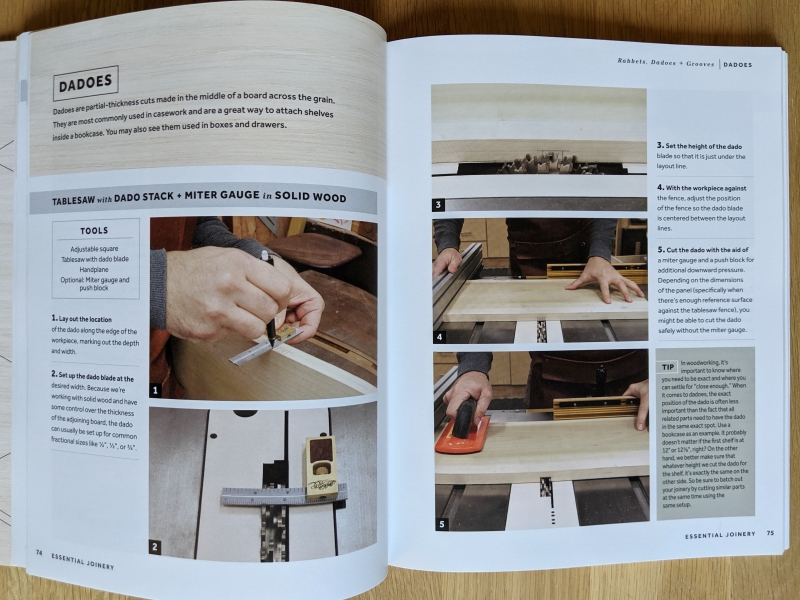
My other complaint, although this one is personal, is that the author often uses a dado stack, which I don’t. I would have preferred that the table saw methods been shown using just a regular saw blade. I actually hesitate to share this point, because I know I’ll sound like every troll on YouTube who complains because they don’t have whatever tool the content creator is using. Still, if you’re a beginner, you may feel this frustration when you see his tenoning jig, shoulder plane or hollow chisel mortiser, to name a few.
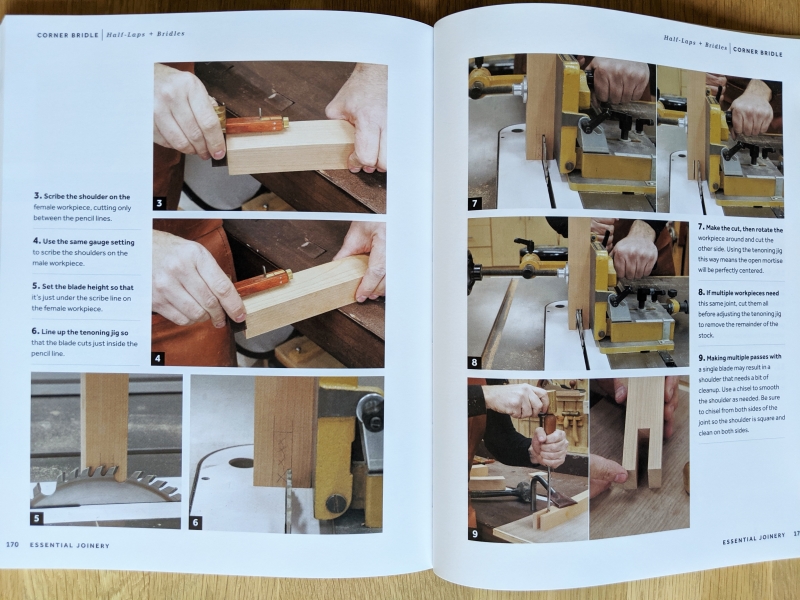
Besides that, the table of contents may be a little oversimplified, making it hard to quickly find a a joinery method you may have recalled from the first time you flipped through. If you can remember the name of the joint, at least there’s always the index at the back.
Book Review: The Verdict
Ultimately this book is a great reference for beginners and intermediate woodworkers. It provides a comprehensive introduction and overview of various joinery methods, while explaining the tools required and the steps you need to follow to create each joint.
While the author provides alternative methods for making each joint, don’t expect to do a deep-dive into each of them, nor to gain a sense of when to use which joinery method or why one might be better than the other in a given situation.
Finally, if you’re a visual person, you won’t be disappointed by this book. The number and the quality of the pictures that fill the pages make this book easy to follow and provide a clear understanding of each method.
Pros & Cons of This Book
Pros
- A great joinery overview and introduction for beginners and intermediate woodworkers
- Tons of high-quality pictures
- Concise and to the point
- Demonstrates different ways to make the same joint (ex: biscuits vs. dowels or table saw vs. router table)
Cons
- Provides only a high level overview of each joinery method, not a deep dive
- Provides more of a joinery menu than insights into choosing the appropriate joinery method
- Simplified table of contents makes it hard to quickly find a given joint
- Target audience (beginners) may not have many of the tools used in this book

Essential Joinery: The Fundamental Techniques Every Woodworker Should Know by Marc Spagnuolo.
Paperback, 10″ X 8″, 216 pages.
Published April 2019.
The next book I’ll be reading is all about finishes! It was written by Bob Flexner, a well-known contributor to Popular Woodworking Magazine and an expert on finishing. Next month, I’ll be reading the newly revised 3rd edition of Understanding Wood Finishing. You can read the book review here.
